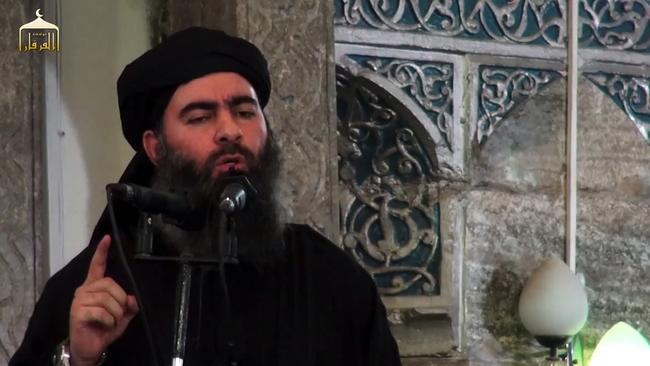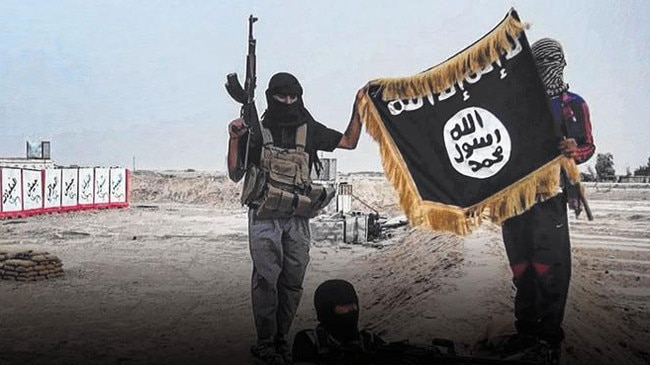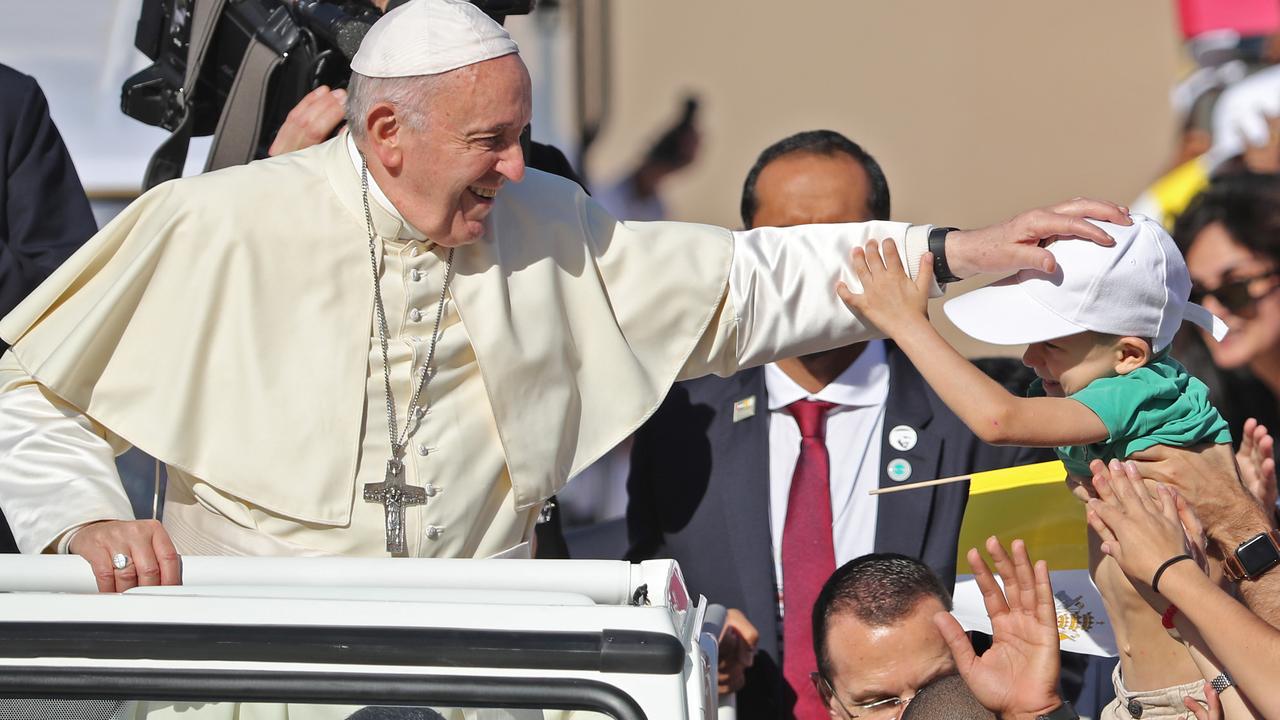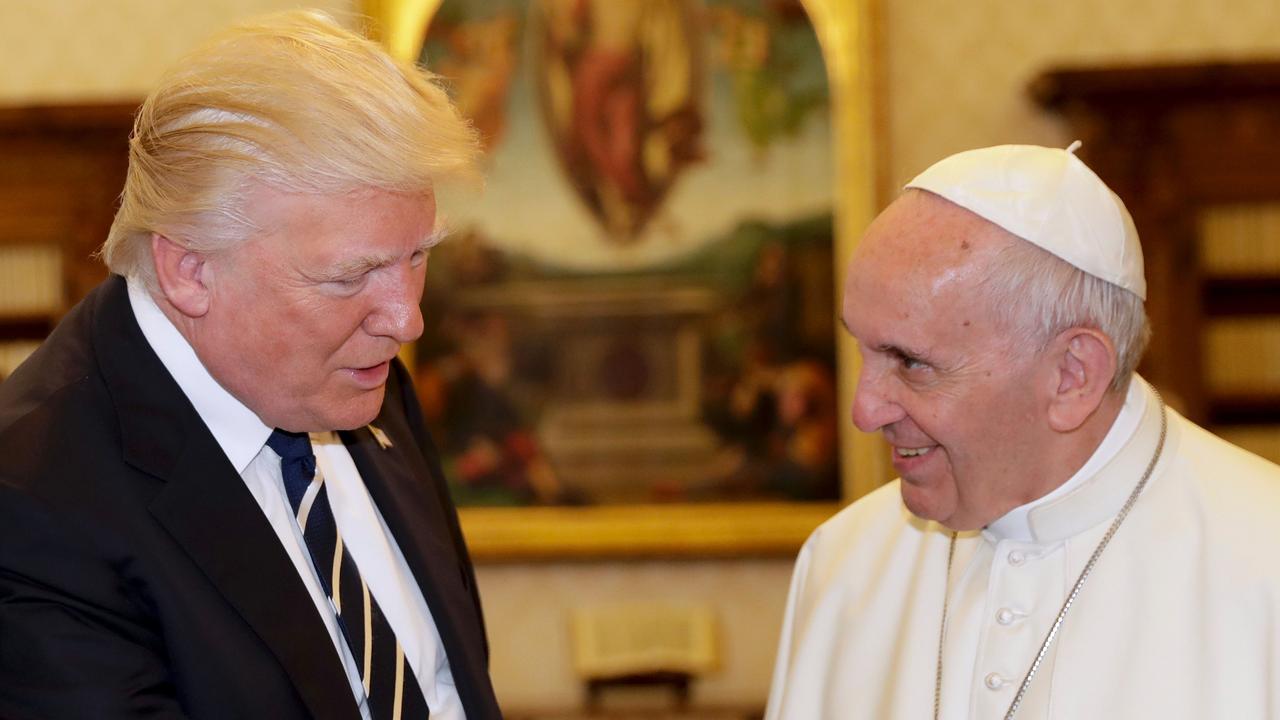
Baghdadi had been on the run since Kurdish-led Syrian Democratic Forces captured his capital, the city of Raqqa in northern Syria, in October 2017. Islamic State’s last stronghold, near Baghouz on the Syrian-Iraqi border, fell to SDF fighters, coalition advisers and US and allied airstrikes in March this year. These losses followed the fall of Mosul in northern Iraq, the largest and most important city controlled by Islamic State, from which Baghdadi declared the “caliphate” in mid-2014.
MORE: Greg Sheridan writes the death of Baghdadi is a big victory but terrorists themselves are by no means defeated | Baghdadi: media-savvy leader changed face of terrorism | Raid live-streamed to White House
Baghdadi went silent after Mosul fell, prompting speculation he had been killed. Late last year, reports emerged of a rebellion within the senior ranks of Islamic State, led by North African fighters disillusioned with Baghdadi. The coup failed, with many dissidents killed. Baghdadi survived.
During the siege of Baghouz early this year, he escaped to an unknown hideout, abandoning his fighters, many of whom fled to the northwest Syrian province of Idlib, the last enclave held by jihadists.
Baghdadi’s recent audio and video appearances – in April this year, when he praised the perpetrators of the Easter bombings in Sri Lanka, and in September when he called on supporters to rescue Islamic State detainees from camps in Syria and Iraq – proved he was still alive and in charge.
Baghdadi was killed in a US raid near Barisha, a village 5km from Turkey in a contested area frequented by smugglers and border-crossers. The operation was launched in helicopters from Erbil in Iraqi Kurdistan, carried out by more than 100 US Army Rangers and Delta Force operators, supported by CIA operatives and Kurdish and Iraqi intelligence, and “deconflicted” with Russian forces, who let the raiders enter Syria without hindrance.
Surprise hideout
Baghdadi’s presence in Idlib, 500km from his last-known location, surprised observers since the province is dominated by Hayat Tahrir al-Sham (HTS), an al-Qa’ida ally and bitter enemy of Islamic State.
HTS has carried out hundreds of operations against Islamic State in recent months, claiming to have killed more than 200 of Baghdadi’s followers.
It’s too early to know exactly what brought Baghdadi to Idlib, although US President Donald Trump, announcing the raid, noted that US forces spent two hours in the compound and extracted large quantities of intelligence material and more than a dozen detainees, so more details may emerge soon.
One theory is that Baghdadi was trying to negotiate a rapprochement with HTS. Although HTS leaders adamantly oppose Islamic State, a smaller faction in Idlib, previously known as the “Khorasan Group” and more recently calling itself Hurras al-Din, has been more open to reconciliation. There are rumours of discussions among jihadist commanders in Idlib, which is under increasing pressure from Russian airstrikes and may soon be invaded by Syria’s Assad regime, about banding together to resist the expected incursion.
Another theory – perhaps more plausible, given that Baghdadi was living with his wives and children in a fortified compound – is that he had chosen the contested area around Barisha as a permanent base, where he could lay low for now, and cross into Turkey to evade pursuit if needed.

Trump triumphant
Trump exulted in Baghdadi’s death, a sentiment echoed by US leaders across the political spectrum, who see it as finally drawing a line beneath the long campaign against Islamic State, itself a successor conflict to the Iraq War started by US president George W. Bush in 2003, and exacerbated by president Barack Obama’s premature withdrawal in 2011. Counter-terrorism analysts have cautioned that Islamic State retains thousands of fighters, continues to carry out attacks across the region, and has supporters worldwide including cells in Western countries, so claims of its demise are wildly premature.
For the broader Islamic State, Baghdadi’s death may not actually be a setback. To be sure, the killing of the “Caliph” and collapse of the territorial “caliphate” ends the group’s claim of paramount authority over all Muslims, and its assertion of leadership within the global jihadist movement now looks shakier. Yet Baghdadi was a hugely polarising figure, hated by al-Qa’ida and related groups, and resented even by other leaders within Islamic State, as last year’s rebellion showed.
Baghdadi’s transformation into a martyr and symbol of the cause will give fighters worldwide a reason to avenge his death, and (if past behaviour is any guide) we will see a rash of vengeance attacks in coming months.
ISIS renewal
It also frees the group to replace him with one of several possible successors, move on from his controversial leadership and reinvent relations with other groups, including al-Qa’ida and HTS.
Reinvention is critical for the long-term survival of Islamic State, which is going through its latest cycle of regeneration as it adapts to the loss of the caliphate.
It has shifted from a conventional state-like force that fought openly and tried to control terrain and govern populations towards a cell-based underground structure. This is one of several times in the group’s history when it has reacted to setbacks by dropping into guerrilla mode, mounting multiple simultaneous attacks in far-flung locations to stop opponents concentrating against it, using the resulting breathing space to regenerate. Civil wars and sectarian conflicts across the region, the prestige Islamic State gained as the first group to declare a caliphate, and its record of success in conquering one-third of Iraq and Syria at the height of its power in 2015-16 provide fuel for its revival under a new generation of younger, more radical and battle-hardened leaders. Baghdadi’s death clears the way for renewal.
At the same time, raids of the kind that just killed Baghdadi are extraordinarily difficult undertakings. They demand detailed intelligence, painstaking preparation, close co-ordination with local allies and bases within striking distance of targets. All these will be harder now that the US has abandoned its Syrian-Kurdish allies and pulled out of the area. For that reason, as Islamic State reinvents itself for life after Baghdadi, it may prove even harder to defeat in its next incarnation.




The death of Islamic State leader Abu Bakr al-Baghdadi is a symbolic blow to the organisation he led since April 2010. In practical terms, it may help the group regenerate as it adapts to the loss of its territorial “caliphate”.